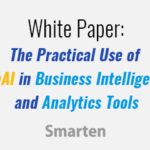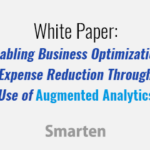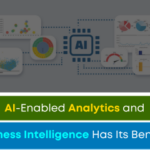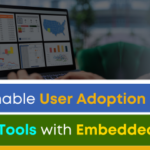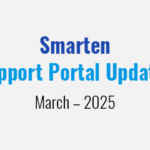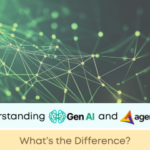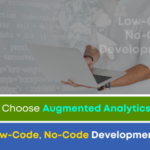What Are the Advantages of Low-Code, No-Code Platform in Augmented Analytics Solutions?

According to some estimates, the rise of low-code, no-code and AI in analytics has increased access to augmented analytics to end-users by 36% to 56%. In fact, Gartner predicts that 75% of new global software solutions will incorporate a low-code approach.
In the analytics software market, the primary driver of this growth is the advent of solutions that can be quickly modified and upgraded to address new requirements and user needs. The creation of no-code and low-code apps allows for simple foundations and construction to analyze data without customization or programming or data science skills supports both developers, data scientists and power users of analytics by providing tools to simply and easily create complex components.
‘When considering an augmented analytics solution, prospective users should carefully review the foundation and technology of the analytical software. The incorporation of new technologies and capabilities will drive current and future user adoption and the successful implementation of analytics within the business user community.’
The organization can leverage and change data workflows, reports, dashboards and predictive models without extensive coding or time investment. While Low-Code development enables organizations to build apps with minimal coding, No-Code utilizes a suite of tools, scripts and components to allow swift construction of apps with very limited coding or user interface (UI) based configurations. Both of these approaches enable a development environment that is agile, and can quickly respond to the changing needs of users, customers and the organization.
With this approach, users enjoy access to data, models, charts, gauges, tables, and grids that satisfy their current needs, and these can be easily modified as the organization grows and changes, and the user requirements evolve.
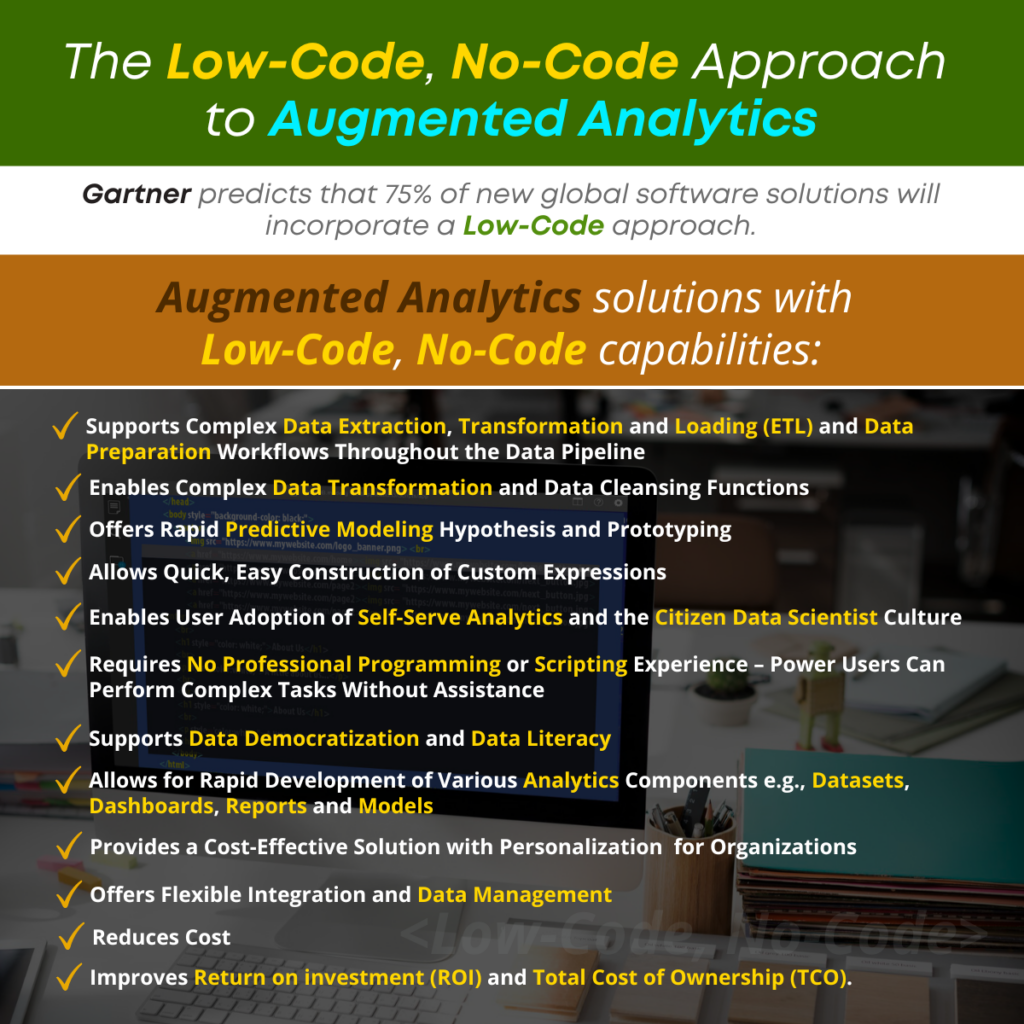
There are numerous benefits and advantages to incorporating low-code, no-code into an analytical environment, and these benefits provide support for developers, data scientists and for power business users.
- Supports Complex Data Extraction, Transformation and Loading (ETL) and Data Preparation Workflows Throughout the Data Pipeline
- Enables Complex Data Transformation and Data Cleansing Functions
- Offers Rapid Predictive Modeling Hypothesis and Prototyping
- Allows Quick, Easy Construction of Custom Expressions
- Enables User Adoption of Self-Serve Analytics and the Citizen Data Scientist Culture
- Requires No Professional Programming or Scripting Experience – Power Users Can Perform Complex Tasks Without Assistance
- Supports Data Democratization and Data Literacy
- Allows for Rapid Development of Various Analytics Components e.g., Datasets, Dashboards, Rports and Models
- Ensures Agility and Speed of Upgrades
- Provides a Cost-Effective Solution with Personalization for Organizations
- Offers Flexible Integration and Data Management
- Reduces Cost
- Improves Collaboration and Productivity
- Improves Return on investment (ROI) and Total Cost of Ownership (TCO).
‘Gartner predicts that 75% of new global software solutions will incorporate a low-code approach.’
When considering an augmented analytics solution, prospective users should carefully review the foundation and technology of the analytical software. The incorporation of new technologies and capabilities will drive current and future user adoption and the successful implementation of analytics within the business user community. Technologies and techniques like low-code, no-code, artificial intelligence (AI), and embedded business intelligence (BI) to provide access to analytics from within enterprise applications, will support data democratization, data literacy and fact-based decision-making within the enterprise.
Smarten Augmented Analytics with low-code, no-code technology will support your team with tools that are intuitive and easy to use and will encourage user adoption. Leverage the essential components of the Smarten Technology foundation, and improve decision-making and outcomes. Explore the potential and capabilities of the Smarten Cloud software-as-a-service (SaaS) product with its low-code, no-code foundation and seamless functionality.



